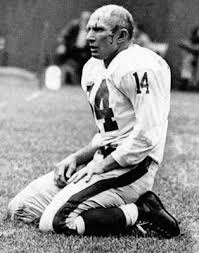
No, not this guy.
A few days ago, I was talking to my kids about Wordsworth’s preface to the second edition of Lyrical Ballads, explaining that it was a kind of manifesto for what he was trying to accomplish. I spent a fair amount of time focusing on Wordsworth’s insistence on balancing “the spontaneous overflow of emotion” with the fact that it must be “recollected in tranquility” to make good poetry. As I told the students, dropping something large and heavy on your foot may result in a spontaneous overflow of emotion, but it can’t even start to be poetry until you can find enough presence of mind — enough tranquility — to start converting it into words, metaphors — poetry. It’s this toughmindedness that folks tend to overlook when they think of the Romantics — it’s not mere sentimental gushing.
I was reminded of this by a piece that ran in the NYT over the weekend on the subject of young adult (Y.A.) fiction (particularly of the dystopian sort), and how it seems to be the current generic cash cow in the publishing biz. Writer Michelle Dean tells us:
Youth is key to the marketing message. I could not help noticing how [Divergent author Veronica] Roth’s case [She was 21 when her work entered the hype machine, and is now 25] echoed in another over the summer: Samantha Shannon’s. She was a 21-year-old Oxford student when her first novel, “The Bone Season,” was declared the Next Big Thing last August. “The Bone Season” is a bit hard to summarize in a paragraph or two: It involves clairvoyants, alternate dimensions and a penal colony for those with supernatural powers. As such, it drew comparisons with “Harry Potter ” rather than with “The Hunger Games.” Hopes were clearly high for its instant blockbuster success, and Shannon had all the ritual blessings the young-adult epic market can offer: a six-figure deal for the first three planned books of seven and a prepublication purchase of film rights. The “Today” show declared it the inaugural pick of its Book Club.
But readers did not respond, not this time. According to Nielsen Bookscan, American sales were in the low-to-mid-five figures in hardcover.
Dean notes that the combination of the “young author” hook and the hope that the market for this sort of stuff results in the publication of work that may not really be ready to go out there. The results don’t appear to be good for either the readers or the writers (from an artistic angle, anyway — financially, Roth and Shannon are probably doing OK.)
And this is where we get back to Wordsworth. Dean, again:
[C.S.] Lewis himself was 51 when the “Narnia” books came out; Lois Lowry was 56 when “The Giver” was published; Madeleine L’Engle wrote “A Wrinkle in Time” in her 40s, and L. Frank Baum his “Oz” books in the same decade of his life.
Age is what the greats have in common. The long years between adolescence and middle age seem to be necessary soil for this craft. It requires roots, and no quick shoots will do. They need years to grow and tangle and set before the brilliant, unforgettable book appears. Many authors of this fare end up leading eccentric lives — check out biographies of Baum, or L’Engle — in part because their attention swivels backward, but the sacrifice seems to be worth it.
The article seems interesting, and I think there’s some truth there. Give it a read.
A tip of the Mondo Mortarboard to Kathy Phillips Nanney, via Facebook.

This post nicely complements the previous post. Wunderkinder get tons of press, but young, hungry writers might benefit from a version of “the talk” emphasizing that they’ll almost certainly be more interesting writers at 30, 40, or 50 than they are at 21.
…but I digress. The Y.A. Tittle reference reminds me of the “athlete game” you and I used to play in Junior High. I take the first letter of your athlete’s last name and my athlete’s first name starts with that letter. Sounds confusing, but we used Y.A. Tittle a lot since few first names start with a “Y”.
Sorry, please return to the literary discussion…